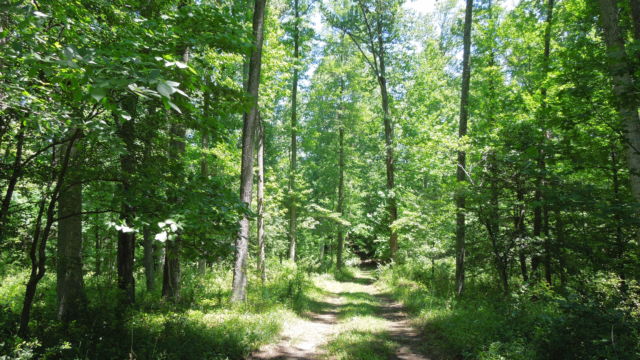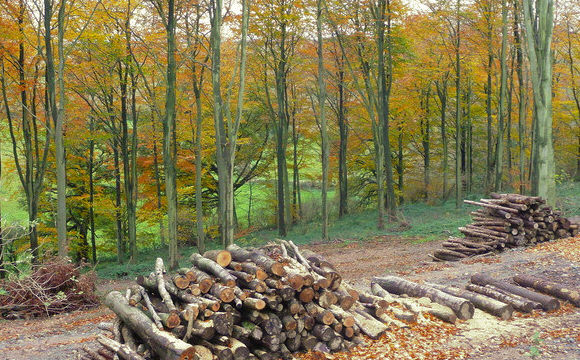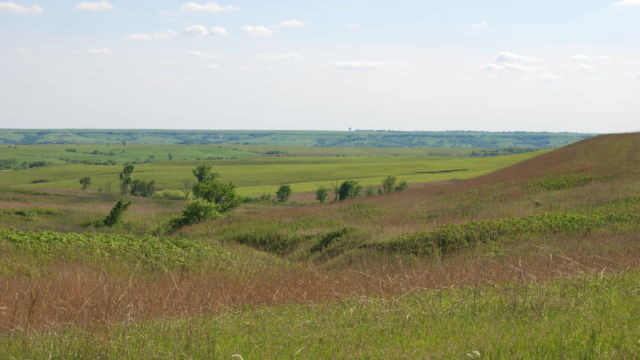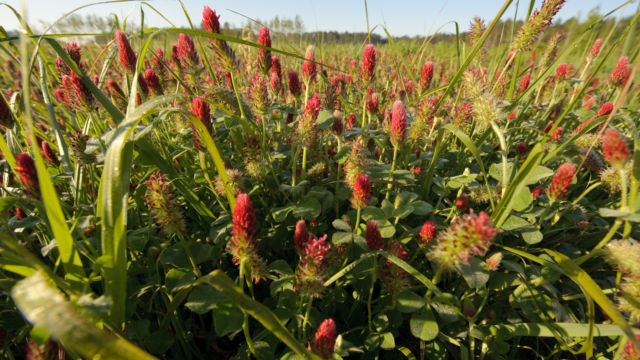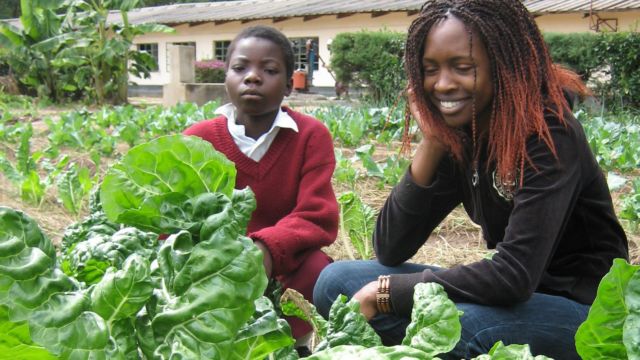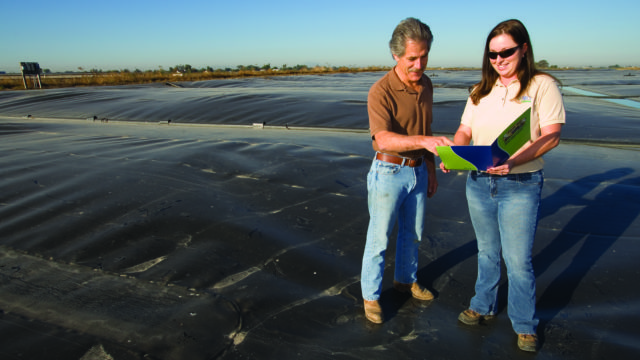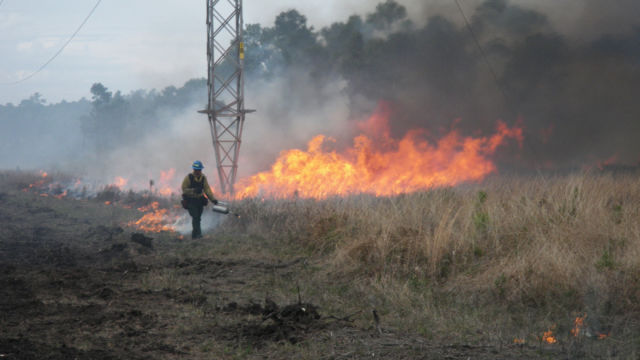by Kristen Minogue
The United States may be officially pulling out of the Paris Climate Agreement, but scientists are still brainstorming ways the country could meet its original goals. Mother Nature can lend a far more powerful hand than we thought, if given the chance.
Led by The Nature Conservancy, a team of scientists from the Smithsonian Environmental Research Center and other organizations looked at 21 “natural climate solutions,” like restoring forests and wetlands or planting cover crops. According to the report published Wednesday in Science Advances, these tactics could knock an estimated 1.2 trillion kilograms off the U.S.’s yearly carbon emissions—just enough to hit the country’s 2025 targets for the Paris agreement. And they come with a range of side benefits, including increased yields for farmers and decreased risks of catastrophic wildfires.
But to work, they would also require a serious rethinking of how our society values carbon. Today, saving 1,000 kg of carbon is worth about $10. To provide enough incentive to make these solutions widespread, the authors estimated those credits would need to go for at least $100 per 1,000 kg.
We’ve highlighted eight of these solutions below, but you can read about all 21 in the full report.
- Restoring forests.
Maximum carbon savings: 307 billion kg per year (337 million tons)
Nothing came close to forests for sheer power to soak up carbon dioxide. Forests are also champions at cleaning the air and water, and sheltering popular wildlife. This study only looked at planting forests where they’ve grown in the past. It also left more than 99 percent of U.S. croplands that could be reforested untouched, to minimize impacts on our food supply. To get the full benefit, some livestock pastures would need to be reforested, which would reduce the nation’s beef production. But this might be less of a burden to consumers than once thought—Americans increasingly favor chicken and poultry over beef. - Managing private forests more sustainably.
Maximum carbon savings: 267 billion kg per year (294 million tons)
Nearly 400 billion kilograms of carbon dioxide escape to the atmosphere every year as a result of logging in the U.S. There are a lot of ways to get this number down. The most effective is to give forests enough time to rest between harvests (the study recommends 25 years or more). Other options include cutting vines, pruning, thinning and reduced-impact logging, which keeps disturbance to the soil and the forest as a whole to a minimum even as individual trees are felled. Practices like this can help forests grow stronger without hurting the bottom line. - Keeping grasslands intact.
Maximum carbon savings: 107 billion kg per year (118 million tons)
Grasslands store vast amounts of carbon in their soils. But when they’re converted to cropland, the top meter of soil gets disturbed, releasing more than a fourth of its carbon to the air. Turning grasslands into cropland can also add ammonia and other particulates to the air, and nutrient pollution to the water. Permanent grasslands can keep the environment cleaner and provide a natural flood control. - Planting cover crops.
Maximum carbon savings: 103 billion kg per year (113 million tons)
Of all the natural climate solutions in the report, cover crops offer by the far the most bang for your buck. During winter or other times the land usually lies fallow, planting “cover crops” like winter rye or crimson clover can hold the soil in place, keeping it from eroding away. They also improve the health of the soil (cutting fertilizer costs and improving yields) and give farmers an extra source of income. Today, cover crops are used on less than 5 percent of the land devoted to the most popular field crops. Putting cover crops on all of it would cut 100 billion kg from our carbon budget—even with the current carbon price of $10 per 1,000 kg. - Managing fertilizer more sustainably.
Maximum carbon savings: 52 billion kg per year (57 million tons)
The process of producing fertilizer alone emits the equivalent of 52 billion kg of carbon dioxide per year. That doesn’t count the other gas fertilizers emit: nitrous oxide, a greenhouse gas nearly 300 times as powerful as carbon dioxide that eats away at the ozone to boot. Often, plants can only take up half the fertilizer that gets applied to the soil. Meanwhile, the unused fertilizer can go on to emit nitrous oxide. Spreading fertilizer only when and where it’s needed can help rein in these emissions. So can switching from ammonia-based fertilizer to urea—a nitrogen-rich compound most commonly found in (you guessed it) urine. And on that note… - Managing poop more sustainably.
Maximum carbon savings: 24 billion kg per year (26 million tons)
No one likes mucking out the stables. But every farm with animals has to find some way to deal with all their dung. On farms in America, especially dairy and hog farms, animal manure often gets stored in deep pits or special oxygen-free lagoons. As it decomposes, it belches out methane, a greenhouse gas between 30 and 45 times more powerful than carbon dioxide. The U.S. Department of Agriculture has come up with several ways farms can capture or reduce some of that methane, such as placing impermeable covers over manure lagoons and using the gas to help generate electricity and heat. Most of these technologies would only work on larger farms (300 dairy cattle or 825 hogs). But even that could cut the methane from America’s livestock manure in half. - Restoring tidal wetlands.
Maximum carbon savings: 12 billion kg per year (13 million tons)
This solution isn’t just about restoring wetlands in general—which bring loads of benefits of their own, including cleaner water and hurricane protection. There’s something special about “tidal wetlands” connected to the sea. When wetlands are cut off from the sea, they’re more likely to emit methane, because all the freshwater favors methane-emitting microbes in the soil. An estimated one-fourth of America’s tidal wetland area has suffered this fate. Restoring that connection allows wetlands to be flooded with saltier seawater instead, which can slash their methane emissions to a mere hundredth of what they were before. - Fighting fire with fire.
Maximum carbon savings: 18 billion kg per year (20 million tons)
Catastrophic wildfires, like the ones raging through California this week, wreak destruction on almost every level imaginable. And they’re predicted to become more common with climate change. But there are ways to make the disastrous fires less likely. Scheduling smaller, controlled fires every few years can help prevent larger ones from blazing up. This is in keeping with the natural cycle of the forest, in which small fires burn away the understory, removing potential fuel for larger fires. Besides saving lives and property, fire management can improve biodiversity and—for climate change—ensure more trees survive to go on soaking up carbon.
Slideshow photo of logged forest by Jonathan Billinger (cropped to fit slideshow) used under this Creative Commons License.
Slideshow photo of students growing spinach in Zimbabwe by Peter Morgan (cropped to fit slideshow) used under this Creative Commons License.

